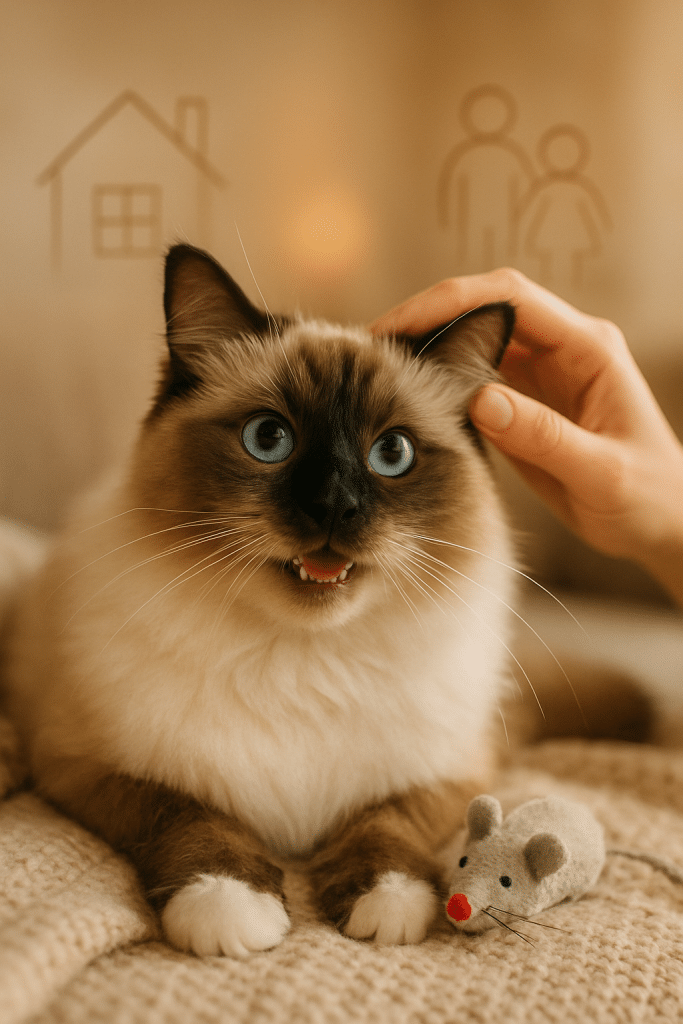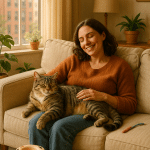When it comes to choosing a feline friend, pet owners and families often find themselves asking, “Which popular cat breeds are the best fit for our household?” After all, bringing a cat home isn’t merely about cute looks—it’s about compatibility, temperament, and how well a cat can adapt to family life. In this article, I’ll walk you through five popular cat breeds that excel in affection, trainability, and adaptability, making them perfect for families and newcomers alike.
We’ll explore what makes a cat breed family-friendly and trainable, delve deep into the unique traits of Maine Coons, Ragdolls, Exotic Shorthairs, Persians, and Devon Rexes, and provide actionable insights on grooming, training, and health care. Whether you have small children, other pets, or limited space, this guide aims to empower you with the knowledge necessary for a harmonious and joyful pet experience.
So, let’s unpack the world of popular cat breeds, focusing on long-term happiness for both you and your furry companion!
Understanding What Makes a Cat Breed Family-Friendly and Trainable
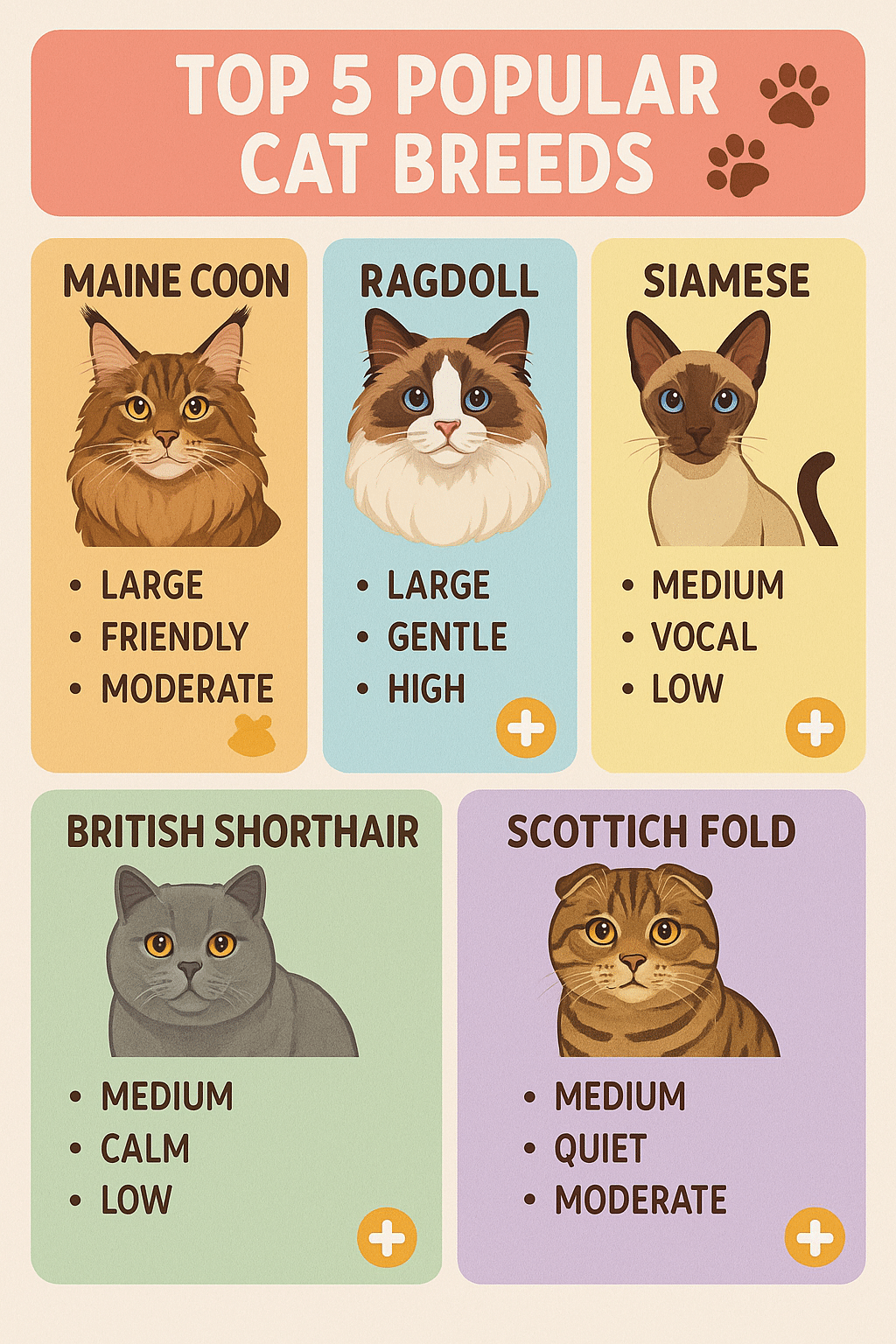
Choosing a cat breed that’s ideal for your family involves more than just picking the fluffiest or most visually appealing breed. You want a cat whose personality, grooming needs, and activity levels align well with your household dynamics, especially if you have children or other pets.
Key Traits of Affectionate and Playful Cats
Affectionate cats tend to seek human companionship, making cuddles and gentle play a daily joy. Breeds like the Ragdoll or Maine Coon often exhibit this trait. Playful cats, such as the Devon Rex, thrive in active households where enrichment and interactive toys keep them engaged.
From my experience and research, some key traits to look for include:
- Social and friendly demeanor: Cats that tolerate or enjoy being handled often adapt better to children.
- Playfulness balanced with calmness: Especially important in homes with younger kids who might be a little physically unpredictable.
- Tolerance for changes and new environments: This reduces stress when introducing new pets or moving houses.
- Trainability: They respond well to cues, litter box training, and sometimes even leash walking.
Importance of Grooming Requirements for Busy Households
Grooming can be a deal-breaker for many families. Long-haired breeds like Persians require daily brushing to prevent mats and tangles, which can be a time-consuming commitment. On the flip side, breeds with shorter or plush coats like the Exotic Shorthair tend to be more low-maintenance.
In some cases, high grooming needs can discourage consistent care, which can lead to skin issues or discomfort for the cat. So, it’s vital to realistically assess your schedule and resources before selecting a breed based on grooming demands.
Assessing Temperament: Quiet vs. Active Cats
Temperament plays a huge role in family compatibility. While some popular indoor cat breeds are naturally calm and quiet, others are energetic and curious.
For example:
- Quiet cats: Persian and Ragdoll breeds tend to be serene and enjoy lounging.
- Active cats: Devon Rex and Maine Coons are playful and need regular mental and physical stimulation.
Again, consider your family’s activity level and daily routine. An active family may enjoy a playful breed that doubles as a fun companion, whereas a calm household might prefer a mellow kitty who appreciates peaceful downtime.
Maine Coon: The Gentle Giant for Large Families
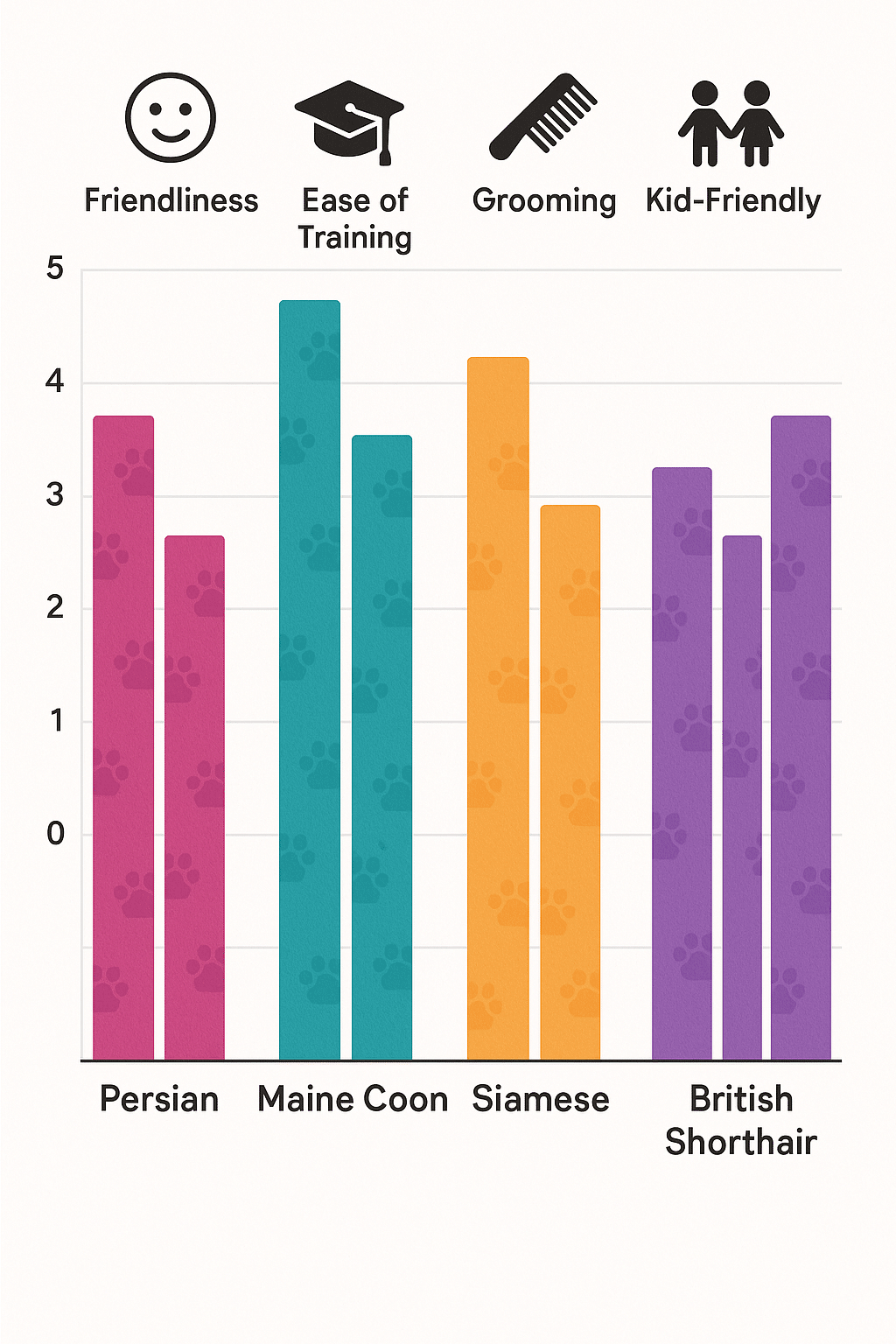
Overview and Unique Characteristics
The Maine Coon is frequently touted as the gentle giant of the cat world. Originating from the northeastern United States, this breed boasts a large frame, tufted ears, and a luxurious, water-resistant coat. Despite their imposing size, Maine Coons have a famously sweet disposition, making them popular cat breeds for families with children.
Their inquisitive nature, combined with an eagerness to please, makes Maine Coons not only adorable but also highly trainable. They enjoy interactive play and can even learn to fetch toys!
Training Tips and Socialization with Children and Pets
If you’re a pet owner juggling dogs or energetic kids, Maine Coons are a great fit. Early and consistent socialization helps them adapt to household hustle and bustle without stress.
Train using positive reinforcement—offering treats and praise when they respond to commands or behave gently around children. Their intelligence shines here, and because they’re food motivated, food puzzles and clicker training work well.
One practical tip: Maine Coons respond well to leash training if you want to safely explore outside. Start indoors with a harness to familiarize them.
Grooming Needs and Health Considerations
Maine Coons have thick, medium to long fur, requiring brushing at least two to three times weekly to avoid mats and reduce shedding. Regular nail trims and ear checks complete the grooming routine.
Regarding health, they’re generally robust but prone to hypertrophic cardiomyopathy (HCM)—a heart condition common in large breeds. Regular veterinary checkups are crucial to catch issues early.
All things considered, Maine Coons balance affectionate nature and sturdy health well, making them one of the most popular large cat breeds for families today.
Ragdoll: The Floppy Cat with a Loving Nature
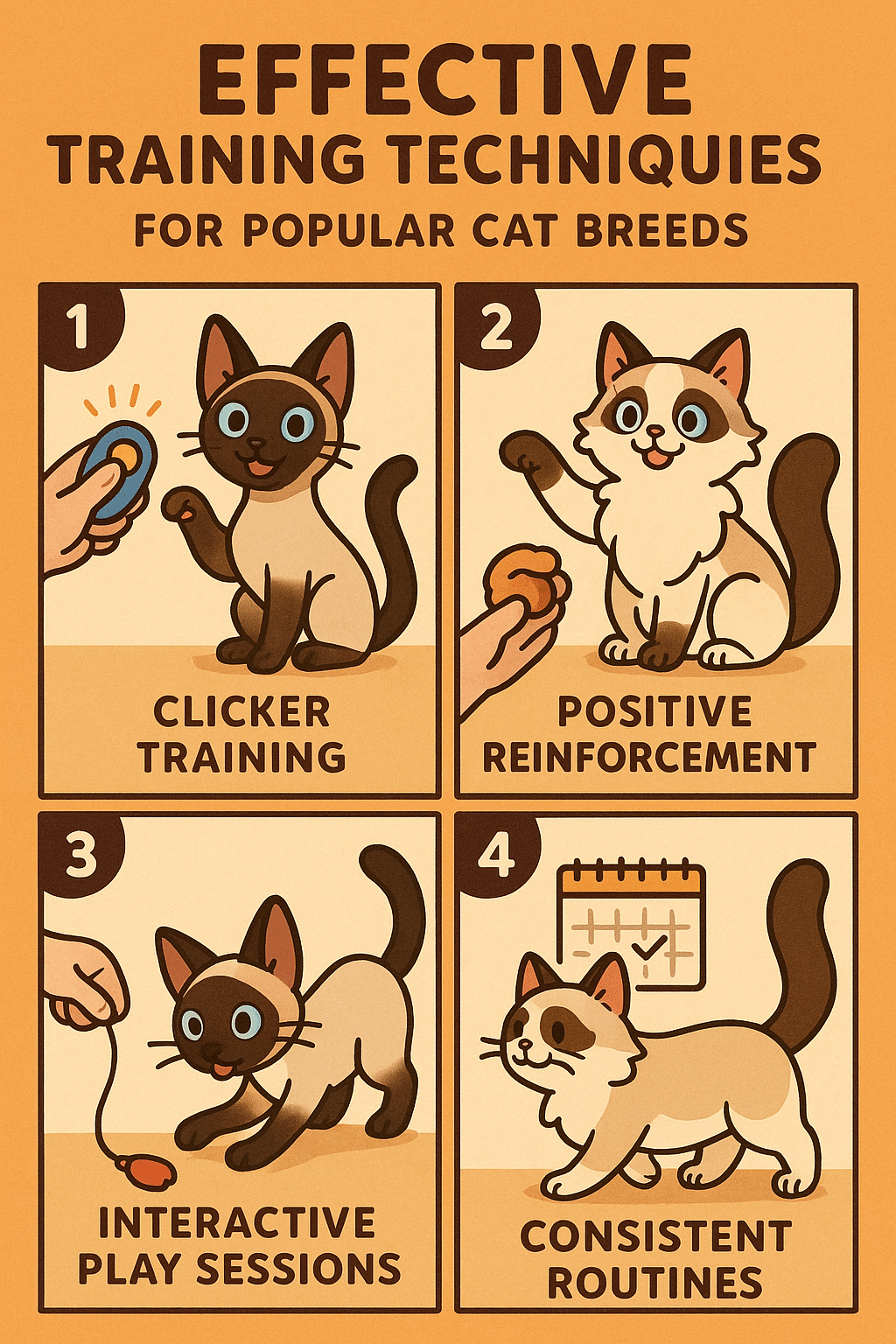
Key Behavioral Traits and Family Compatibility
Ragdolls earned their name because of their tendency to go limp and relaxed when picked up—a sure sign of trust and comfort. They’re among the top popular cat breeds known for being affectionate and gentle, traits that make them excellent companions for families with children.
Their calm demeanor, intelligence, and softness mean they bond deeply with humans, often following family members from room to room. Their sociability extends well to other pets too, reducing tension in multi-pet households.
Indoor Living and Hypoallergenic Considerations
Ragdolls are best suited as indoor cats due to their trusting nature, which may make them vulnerable outdoors. Indoor living also protects them from common cat illnesses and accidents.
While the Ragdoll’s semi-long coat is beautiful, it is not hypoallergenic—meaning allergy sufferers might still experience reactions. However, they do tend to shed less than some long-haired breeds, and daily light grooming helps manage dander indoors.
Enrichment Ideas and Training Approaches for Ragdolls
To keep a Ragdoll mentally stimulated, consider:
- Puzzle feeders
- Interactive wand toys
- Gentle games that encourage their playful side without overwhelming their calm sensibilities
Training tends to be straightforward with Ragdolls, thanks to their keen intelligence and eagerness for treats. Simple commands like “come” and “sit” can often be taught, enhancing communication and bonding.
Exotic Shorthair: Low-Maintenance and Affectionate Companion
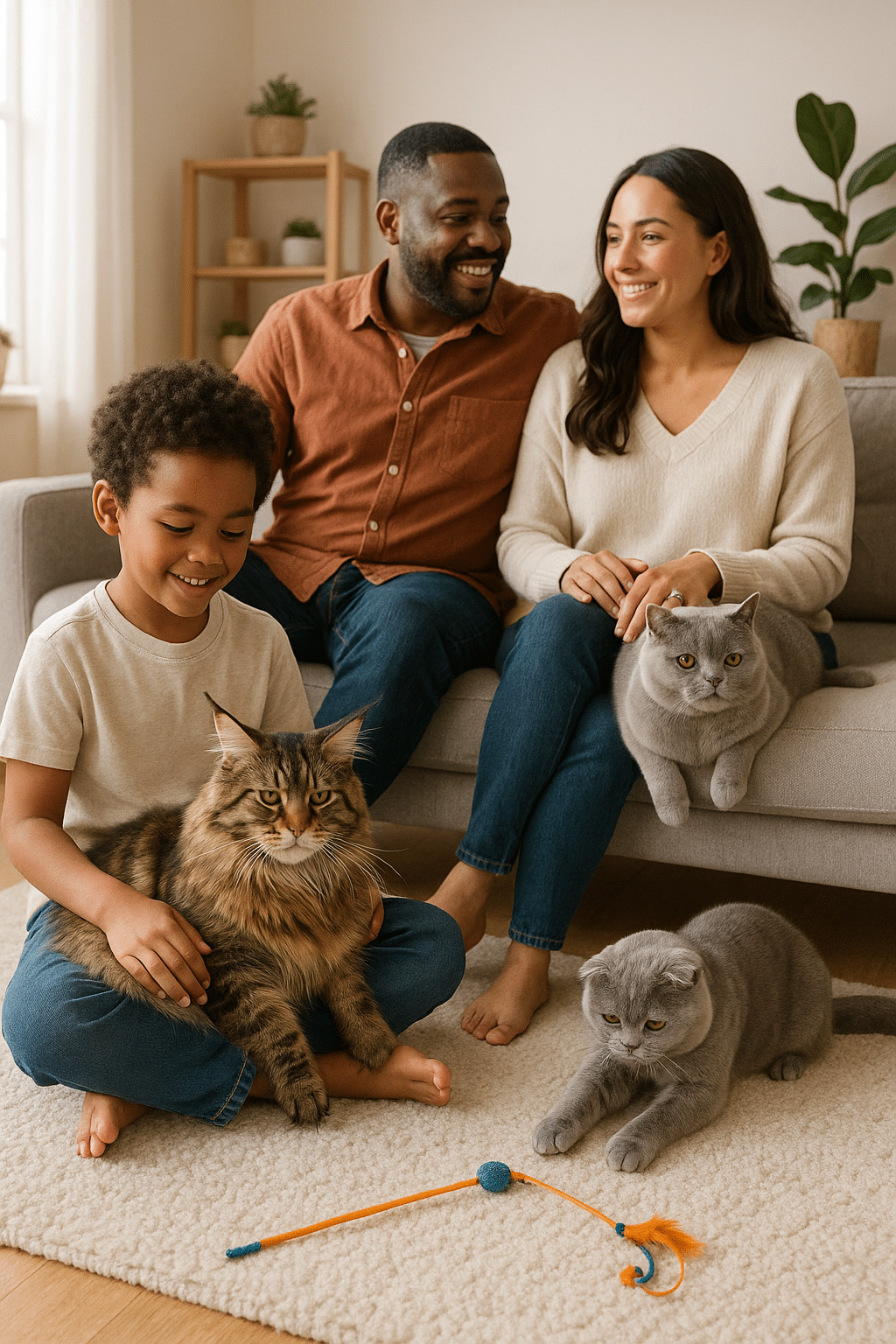
Personality Overview and Suitability for First-Time Owners
Often described as a “Persian in a short coat,” the Exotic Shorthair combines plush fur with the gentle, low-key temperament of a Persian. This breed is ideal for first-time owners who want a calm, affectionate cat without the intense grooming of longer-haired breeds.
They adore attention and are well known to follow their owners around, reveling in lap time and quiet affection.
Grooming Simplified: Managing the Plush Coat
Exotics require much less grooming than Persians—usually a weekly brushing suffices because their dense, plush coat does not mat easily. This makes them a popular cat breed with low grooming needs, particularly suited for busy families.
However, their flat face (brachycephalic) requires some special care such as wiping tear stains regularly and monitoring breathing, as this facial structure can sometimes cause respiratory issues.
Behavioral Insights and Suitable Training Techniques
Exotic Shorthairs tend to be gentle and adaptable. They enjoy play sessions and respond well to treats. Training should focus on positive reinforcement and patience—using calm tones and rewards to encourage good behavior.
Because of their moderate energy levels, they respond nicely to interactive toys like laser pointers or soft balls, making playtime fun yet manageable.
Persian: Classic Long-Haired Beauty with a Calm Temperament
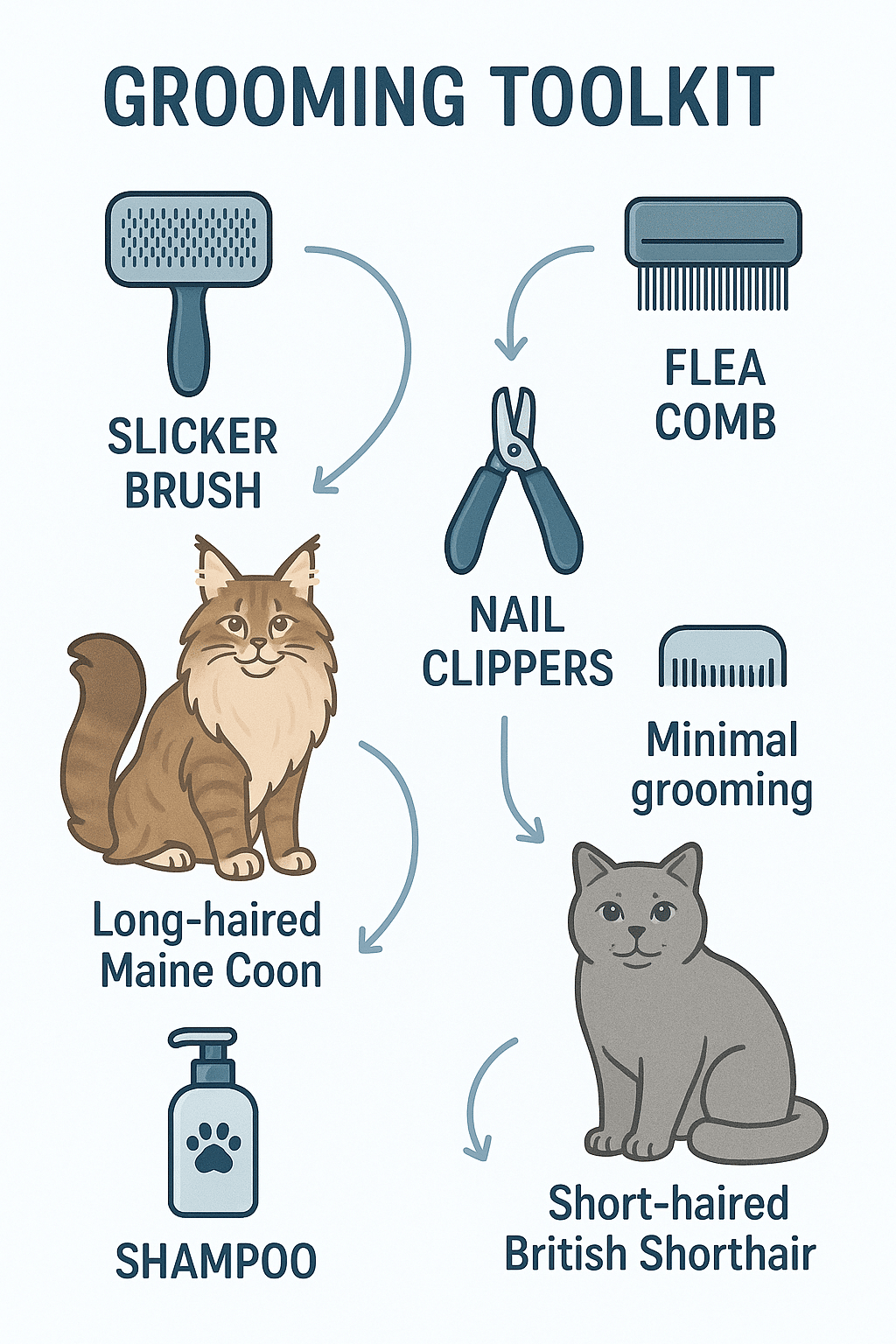
Historical Popularity and Breed Characteristics
Persians have long been among the most popular cat breeds worldwide due to their regal appearance and soothing nature. Their thick, flowing coat and sweet-faced appearance turn heads wherever they go.
Known for their calm, quiet personality, Persians excel in homes seeking a tranquil environment without the need for energetic playtime.
Grooming Requirements and Health Watchpoints
Grooming a Persian is an all-day affair! They require daily brushing to prevent tangles and mats. Without proper care, their long fur can become a source of discomfort.
Health-wise, Persians are prone to several conditions like polycystic kidney disease (PKD), respiratory issues due to their flat face, and eye conditions like excessive tearing. Choose a reputable breeder who screens for these health concerns.
Training Strategies for a Calm Household Environment
Training a Persian involves patience and gentleness. Since they are naturally calm, focus on reinforcing litter-box use and basic commands with soft, encouraging tones.
Creating a quiet sanctuary within the home, with comfy beds and low-traffic spaces, helps Persian cats thrive.
Devon Rex: Playful and Intelligent for Active Families
Distinctive Appearance and Behavioral Profile
The Devon Rex is instantly recognizable by its large ears, curly coat, and mischievous expression. Known as one of the most playful and intelligent popular cat breeds, they thrive in active homes where their curiosity can be satisfied.
Their agility and love for climbing off the ground add an entertaining dynamic to family life.
Stimulating Training Methods and Interactive Toys
Devon Rex cats respond excellently to puzzle feeders, treat dispensers, and fetch-like games. Training sessions should be frequent but brief to keep their attention.
Encouraging behavior like using scratching posts or coming when called benefits from consistent treat rewards. They can also be taught to walk on a leash with patience.
Managing Grooming and Skin Care for Sensitive Coat
Despite short hair, the Devon Rex’s coat is delicate and soft, requiring gentle grooming. Weekly brushing is adequate, but owners should monitor for sensitive skin or allergic reactions.
Their unique coat can sometimes be oily, so occasional bathing with gentle cat shampoo benefits skin health.
Comparing Popular Cat Breeds: Matching Traits with Family Needs
| Breed | Grooming Needs | Activity Level | Best For | Hypoallergenic? |
|---|---|---|---|---|
| Maine Coon | Moderate (Regular brushing) | Moderate-High | Large families, homes with dogs/kids | No |
| Ragdoll | Moderate (Regular brushing) | Low-Moderate | Families with kids, indoor living | No |
| Exotic Shorthair | Low (Weekly brushing) | Low-Moderate | First-time owners, busy families | No |
| Persian | High (Daily brushing) | Low | Quiet homes, calm environments | No |
| Devon Rex | Low (Weekly care) | High | Active families, playful homes | Somewhat (Lower allergen levels) |
This handy comparison helps match your family’s lifestyle with the right breed. For allergy sufferers, Devon Rex may be more suitable though it’s essential to interact with the cat first, as no breed is entirely hypoallergenic.
Enhancing Your Cat’s Training and Behavioral Development
Positive Reinforcement Techniques for Popular Breeds
No matter the breed, positive reinforcement remains the most effective training method. Rewarding good behavior with treats, praise, or playtime encourages cats to repeat actions.
Consistency is key—use the same commands and reward systems daily. For instance, teaching a Maine Coon to come when called can be as simple as offering a favorite treat or toy right after the behavior.
Building Strong Bonds: Socialization with Children and Pets
Early and ongoing socialization is vital. Allow your cat to explore safely alongside family members and other pets under supervision. This helps build trust and reduces fear-related behaviors.
Supervised interactions teach children how to approach and handle cats gently, which in turn supports the cat’s comfort.
Environmental Enrichment: Toys and Safe Indoor Spaces
Interactive toys, climbing towers, scratching posts, and cozy hiding spots promote mental and physical health. Vary toys to keep your cat curious—think laser pointers, puzzle feeders, or catnip-filled items.
An enriched environment reduces destructive behaviors and boredom, which can be common in indoor popular cat breeds.
Veterinary Guidance for Popular Cat Breeds in Family Homes
Preventive Health Care and Regular Check-Ups
Breeds like Maine Coons and Persians have specific health challenges requiring routine veterinary visits. Annual examinations, dental checks, and vaccinations are essential.
Discuss breed-specific conditions with your veterinarian, such as heart disease screening for Maine Coons or kidney checks for Persians.
Nutrition Tailored to Popular Breeds’ Needs
Diet influences energy levels and coat condition. For example, active breeds like Devon Rex may benefit from high-protein formulations, while less active Ragdolls thrive on balanced, calorie-conscious diets.
Feed high-quality, breed-appropriate food and consult your vet for any specialized nutritional needs.
Managing Behavioral or Health Issues Unique to Each Breed
Some breeds need early intervention for behavioral issues related to anxiety or excessive vocalization. Persians may develop ocular problems requiring eye drops or care.
Awareness and early veterinary involvement improve long-term quality of life.
Preparing Your Home for a Popular Cat Breed Arrival
Safe Spaces and Introducing Cats to Family Members
Designate a quiet room stocked with essentials—litter box, food and water bowls, and a cozy bed—as the initial sanctuary. Gradually introduce family members and other pets over days or weeks to ease the transition.
Patience pays off; never rush introductions.
Essential Supplies and Grooming Tools
Stock up on breed-appropriate brushes, nail clippers, scratching posts, and toys before the cat’s arrival. Having these on hand ensures grooming and enrichment needs are met from day one.
Brands like Litter-Robot and Furminator provide excellent automated litter solutions and grooming tools that can simplify care.
Tips for Reducing Stress During Transition Periods
Maintain consistent feeding times and routines. Use pheromone diffusers like Feliway to create a calming environment. Spend quiet time bonding with your new cat to cement trust.
Adoption vs. Purchase: Finding the Right Popular Breed for Your Family
Benefits of Adopting Registered Popular Cat Breeds
Adoption gives a loving cat a second chance and can be more affordable. Many breed-specific rescues exist, offering cats of all ages with health and temperament screenings.
Reputable Breeders and What to Look For
If purchasing, choosing a responsible breeder is critical. Look for transparency, health guarantees, and verified lineage. Avoid breeders who prioritize profit over the cat’s health and temperament.
Supporting Rescue Organizations for Popular Breeds
Organizations like the Maine Coon Rescue or Ragdoll Rescue provide breed-specific adoption opportunities and educate future cat owners.
Supporting these groups helps improve the lives of many cats and ensures better placements.
FAQs
Q1: What are the best popular cat breeds for families with children?
A1: Maine Coons, Ragdolls, and Exotic Shorthairs are among the best popular cat breeds for families with children due to their gentle, affectionate nature and patience.
Q2: Which popular cat breeds have low grooming needs?
A2: Exotic Shorthair and Devon Rex cats require relatively low grooming compared to long-haired breeds like Persians, making them excellent choices for busy households.
Q3: Are any popular cat breeds good for allergy sufferers?
A3: While no cat is truly hypoallergenic, Devon Rex cats tend to produce fewer allergens. It’s always best to spend time with a cat before adoption to test for allergies.
Q4: What training tips work best for popular cat breeds?
A4: Positive reinforcement, including treats and gentle praise, works well. Consistency in commands and daily short training sessions yield the best results.
Q5: Can popular cat breeds live happily indoors only?
A5: Absolutely! Breeds like Ragdolls, Persians, and Exotic Shorthairs thrive as indoor cats. Indoor living protects them and allows for better control over their health and safety.
Quick Takeaways
- Understanding temperament, grooming, and activity level is crucial when choosing popular cat breeds for families.
- Maine Coons serve as affectionate giants who adapt well to busy households with children and pets.
- Ragdolls offer loving and calm companionship, thriving in indoor, family-oriented settings.
- Exotic Shorthairs combine plush coats with lower grooming demands—great for first-time owners.
- Persians require high grooming but suit calm, low-activity homes admirably.
- Devon Rex cats are energetic and playful, ideal for active families seeking interaction.
- Consistent training using positive reinforcement fosters strong bonds and good behavior.
- Veterinary care tailored to each breed’s needs ensures longevity and wellness.
- Adoption is a rewarding option and supports the broader cat rescue community.
Conclusion
Choosing among the popular cat breeds can be a thrilling yet daunting journey for pet owners and families. Each breed brings unique traits, grooming needs, and personalities that impact daily life. From the sociable Maine Coon to the playful Devon Rex, there’s a perfect feline companion waiting for your home.
By understanding the core characteristics of these popular breeds, coupled with effective training and care strategies, you can ensure a fulfilling relationship for both your family and your cat. Remember, a well-matched cat means more happiness, fewer surprises, and a lifetime of cherished memories.
If you’re considering adding one of these loving, trainable popular cat breeds to your family, take the time to assess your lifestyle and commitments carefully. Consult with breeders, adoption groups, and veterinarians to make an informed choice. And above all, prepare your home with love and patience—the best ingredients for welcoming your new furry family member!
Happy cat parenting!

